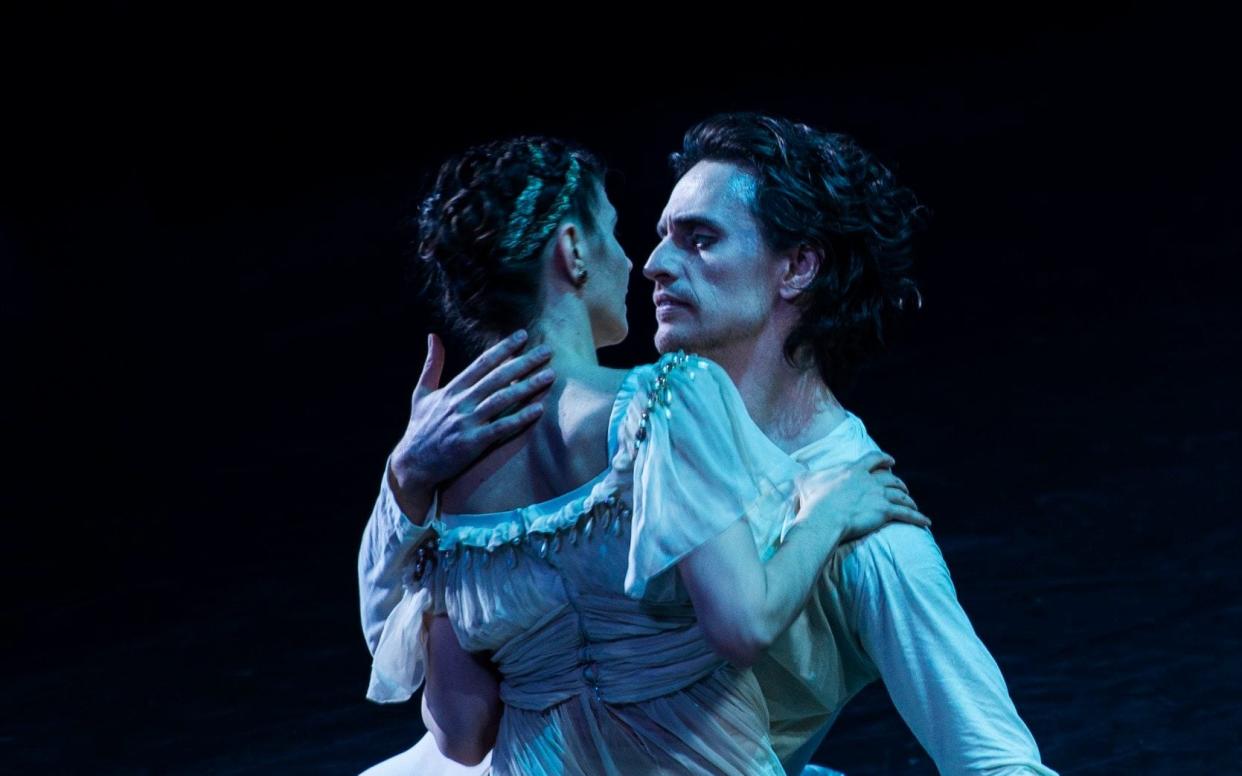Romeo and Juliet, review: Polunin finds his redemption, but Cojocaru's the star

- Oops!Something went wrong.Please try again later.
- Oops!Something went wrong.Please try again later.
From the Putin tattoo to the drug-taking and homophobic comments, Sergei Polunin – the “bad boy” who sensationally quit the Royal Ballet in 2012 – has become more provocateur than dancer. His work with independent company Polunin Ink, supposedly a challenge to the establishment, has flopped. But might this stab at Romeo, the part he was due to play at the Royal, prove redemptive?
Happily, yes – this is the first real success for Polunin Ink. Danish choreographer Johan Kobborg’s new production, which premiered in Verona in 2019, actually delivers on Polunin’s aim to give ballet a shot of adrenalin. His ruthlessly edited 90-minute version (compared with Kenneth MacMillan’s three hours) fits the modern attention span, and its urgency suits this hot-blooded tale.
Gone are many of Shakespeare’s supporting roles, including the Nurse and Rosaline, as well as several plot points. The intense focus heightens the emotions of the most vivid characters – provocative Mercutio, wrathful Tybalt, and the lovers.
Of course, many attended this one-night-only event purely to see Polunin. Thankfully, he rewarded that adoration with a committed performance full of his trademark virtuosic leaps and whisper-soft landings. He has less range as an actor, though. His Romeo wasn’t particularly lovelorn, more a moody, misunderstood outsider.
Still, the luminous Alina Cojocaru, as Juliet, teased out a giddy playfulness in their partnering. One minute they were rolling on the floor, the next soaring into the lifts, almost disbelieving at how perfectly they fit together. Most striking was the star-crossed lovers lying entwined, gazing up at the sky.
Nikolas Gaifullin supplied a preening, cat-like Tybalt with an explosive temper and equally explosive elevation, while, as Mercutio, the charismatic and lightning-fast Daichi Ikarashi buzzed around him like a taunting fly. Their climactic sword fight was a heart-pounding display.
However, it was Cojocaru who best captured Kobborg’s combination of classical vocabulary and expressive performance. Her Juliet formed the emotional arc of the show, from sheltered girl, hopping around like an inquiring bird, to a storm of conflicting passions. Kobborg is her life partner and her former Royal Ballet Romeo, and this really felt like a love letter to her.
The stage was dominated by Canadian artist David Umemoto’s enormous Brutalist stone sculpture – think the Pyramids meets the Barbican – which rotated to reveal vertiginous staircases and giant archways. It was exquisitely lit by Konstantin Binkin, creating long shadows in which observers lurked, a heavenly shaft during the wedding, or a stark tableau as Lord Capulet handed Juliet to Paris, her intended. It also provided the unmovable force of tradition: the lovers slammed into its walls or swallowed up by it. It was powerful, although sometimes overbearing as both symbolism and scenery.
The downside of this production model was the lack of cohesion; it felt, as it was, like an assembled group of individuals rather than a long-standing company. The trios went out of sync and the ensemble work rarely matched the magnitude of Prokofiev’s score (here played from a recording). So, not entirely convincing as a revolutionary model for ballet, but a bold statement – and a comeback for Polunin.
No further performances

